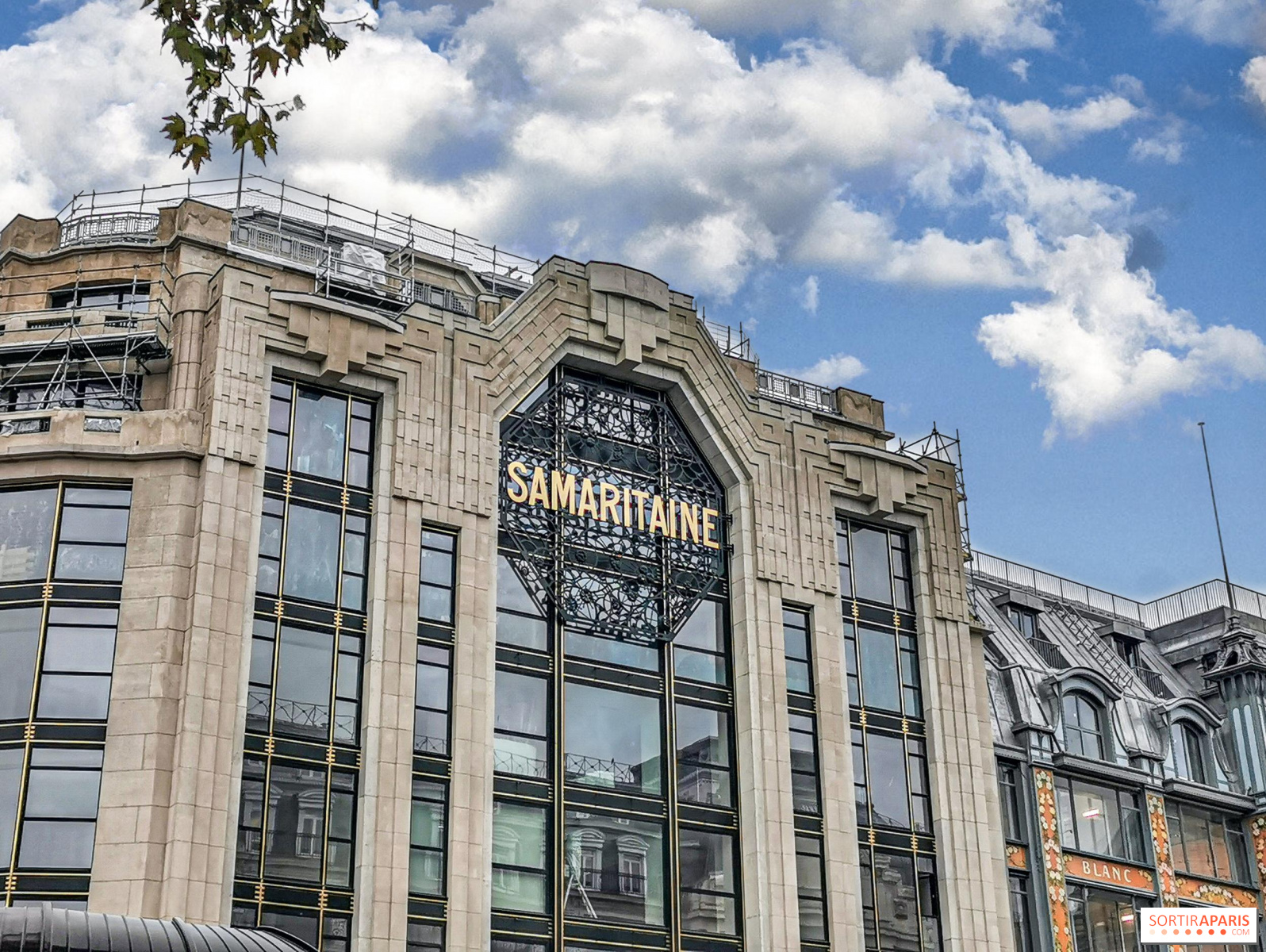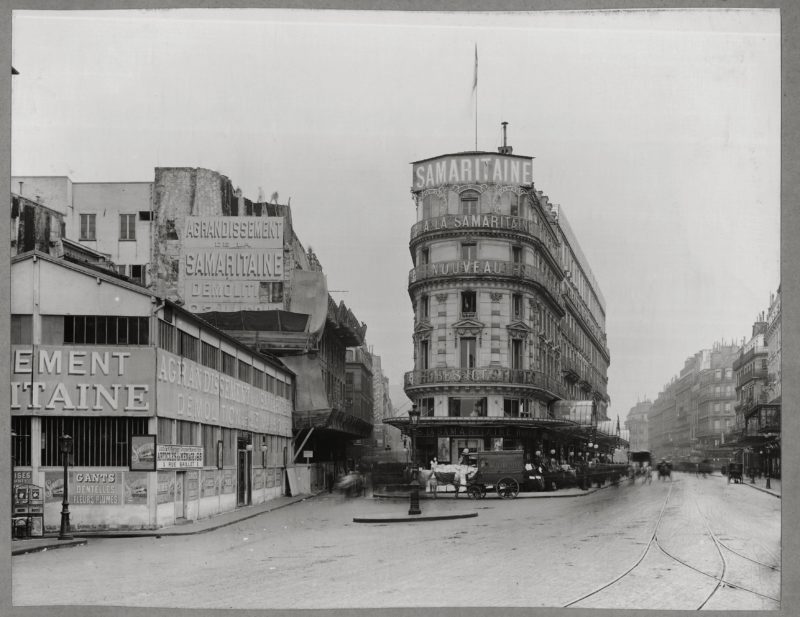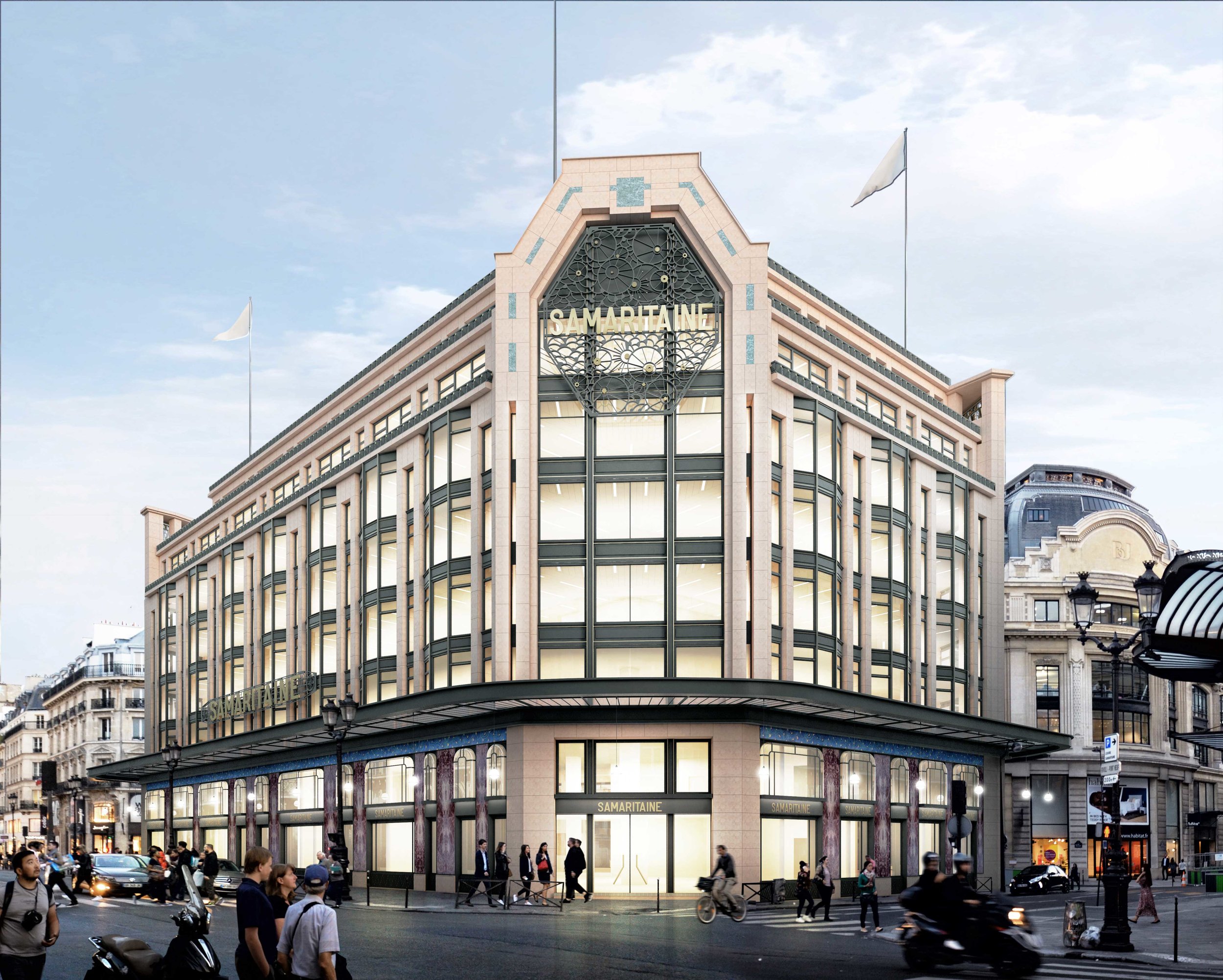The 5 great dates that marked the history of the Samaritaine

After 16 years of closure for safety reasons linked to its dilapidation, the Samaritaine will finally be able to reopen its doors on June, 19th. Owned by the luxury group LVMH, its renovation will have cost a total of 750 million euros. A look back at the history of this historic building in the centre of Paris in five dates.
The department store was originally scheduled to reopen in April 2020 for its 150th anniversary, but the Covid-19 pandemic forced the management to postpone the opening, which will therefore be held later next month.
On the occasion of its reopening, let’s go back in time and remember five dates that marked the history of the Samaritaine.
March 21th of 1870: 151 years ago, the Samaritaine was founded by Ernest Cognacq, a Parisian merchant. He rented the adjoining room of a café in Rue de la Monnaie to set up a small novelty shop, which he named “À la Samaritaine“. Its name was derived from the name of a water pump located on the Pont Neuf in Paris, dating from the time of Henri IV, which itself had its origins in a biblical passage recounting the encounter between Jesus and the Samaritan woman. Victim of his success, he undertook the progressive enlargement of his shop until it reached a size of 100 m², to create the “Grands Magasins de la Samaritaine“.
1874-1903: As the shop continued to prosper, several buildings were acquired by the owner of the Samaritaine, in order to undertake a second expansion, and which would become the second Samaritaine shop. These buildings, located in Rue de la Monnaie, Rue Baillet and Rue de l’Arbre-sec, were fitted out, extended and transformed by the architect Frantz Jourdain. It was Jourdain who built the glass floors with metal structures, a permanent feature of the Samaritaine’s architecture. The facades, renovated in an Art Nouveau style, were widely criticized by supporters of a more traditional aesthetic for the historic heart of Paris.

1930-1932: Following the death of Ernest Cognacq, his successors Gabriel Cognacq and Georges Renand once again carried out a project to enlarge the Samaritaine by creating a third and fourth shop. This time, it’s to Henri Sauvage that was given the architectural project for these buildings, which was clearly different from that of Jourdain. Distinguished from Jourdain’s work by the application of pinkish stones on its façade, belonging to an Art Deco style, his work was judged more inventive and accomplished, and was much more appealing to Parisians.

June, 15th of 2005: How could we not mention the tragic date of the closure of the Samaritaine. One of the largest shops in Paris was forced to close in 2005, following several studies of its lack of safety due to its dilapidated condition and fire risk. La Samaritaine, which occupied a surface area of 75,000 m² and welcomed 10,000 to 20,000 customers a day, was therefore forced to close its doors to the public for 16 years. Undertaking work at a total cost of 750 million euros, LVMH‘s objective was to bring the buildings into compliance with modern safety standards, in order to allow the Samaritaine to be reopened. Although the closure initially appeared to be definitive, given the complications during the shop’s construction (between legal appeals and the refusal of LVMH’s renovation project), the Samaritaine expects to reopen its doors to the public in the very near future.

June, 19th of 2021: Finally, the next date that will mark the history of the shop will take place in a few days. After a postponed reopening due to the Covid-19 pandemic, it is finally the moment for the famous shop in the 1st arrondissement of Paris to welcome its customers again. The shop will occupy 20,000 sqm (compared to around 30,000 sqm when it closed), and will have “spaces designed by the Sanaa firm, but also by Hubert de Malherbe, Ciguë and Yabu Pushelberg“, according to a press release sent to AFP. It will be managed by DFS, a selective distribution group owned by LVMH, and will offer its future customers a selection of 600 luxury brands combining fashion, lifestyle and gastronomy.
Read also > LUXURY HOTELS: THE 7 MOST EAGERLY AWAITED PARISIAN OPENINGS IN 2021
Featured photo : © Samaritaine
[EN] CLAIRE DOMERGUE, A SPECIALIST IN COMMUNICATION IN THE LUXURY SECTOR, HAS SURROUNDED HERSELF WITH EXPERTS TO CREATE THE FIRST MEDIA DEDICATED TO THE ECONOMIC NEWS OF LUXURY AND FASHION. THE LATTER DRAWS THE ATTENTION OF ITS READERS TO ALL THE MAJOR PLAYERS IN THESE SECTORS WHO SHARE THEIR EXPERIENCES, VISIONS AND KNOW-HOW. MORE THAN A SPECIALIZED WEBZINE, LUXUS PLUS IS A MULTI-SECTOR INFORMATION SYSTEM, WHICH HAS BECOME THE REFERENCE MONITORING TOOL FOR LUXURY AND FASHION PROFESSIONALS. OUR NEWSLETTERS CONTRIBUTE TO MAKE OUR READERS AWARE OF THE CHANGES AFFECTING THE LUXURY INDUSTRIES. THANKS TO AN INCREASED WATCH AND AN EXCELLENT KNOWLEDGE OF THE SECTOR, WE ARE INTERESTED IN THE MAIN ECONOMIC AND TECHNOLOGICAL STAKES OF FASHION, FINE WATCHMAKING, JEWELRY, GASTRONOMY, COSMETICS, PERFUMES, HOTELS, PRESTIGIOUS REAL ESTATE...********[FR] Claire Domergue, spécialiste de la communication dans le secteur du luxe, s’est entourée d’experts pour créer le premier média consacré à l’actualité économique du Luxe et de la mode. Ce dernier attire tout particulièrement l’attention de ses lecteurs sur l’ensemble des acteurs majeurs de ces secteurs qui y partagent leurs expériences, visions et savoir-faire. Plus qu’un webzine spécialisé, Luxus Plus est un système d’information multi-sectoriel, devenu l’outil de veille de référence pour les professionnels du luxe et de la mode. Nos newsletters de veille contribuent en effet à sensibiliser nos lecteurs aux mutations qui touchent les industries du luxe. Grâce à une veille accrue et à une excellente connaissance du secteur, nous nous intéressons aux principaux enjeux économiques et technologiques de la mode, la haute horlogerie, la joaillerie, la gastronomie, des cosmétiques, parfums, de l’hôtellerie, l’immobilier de prestige…






